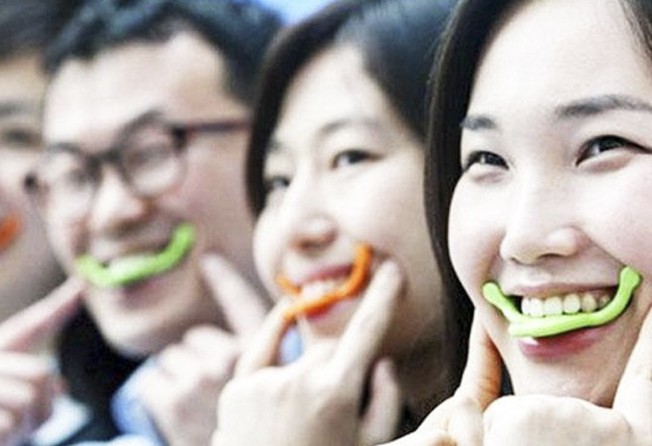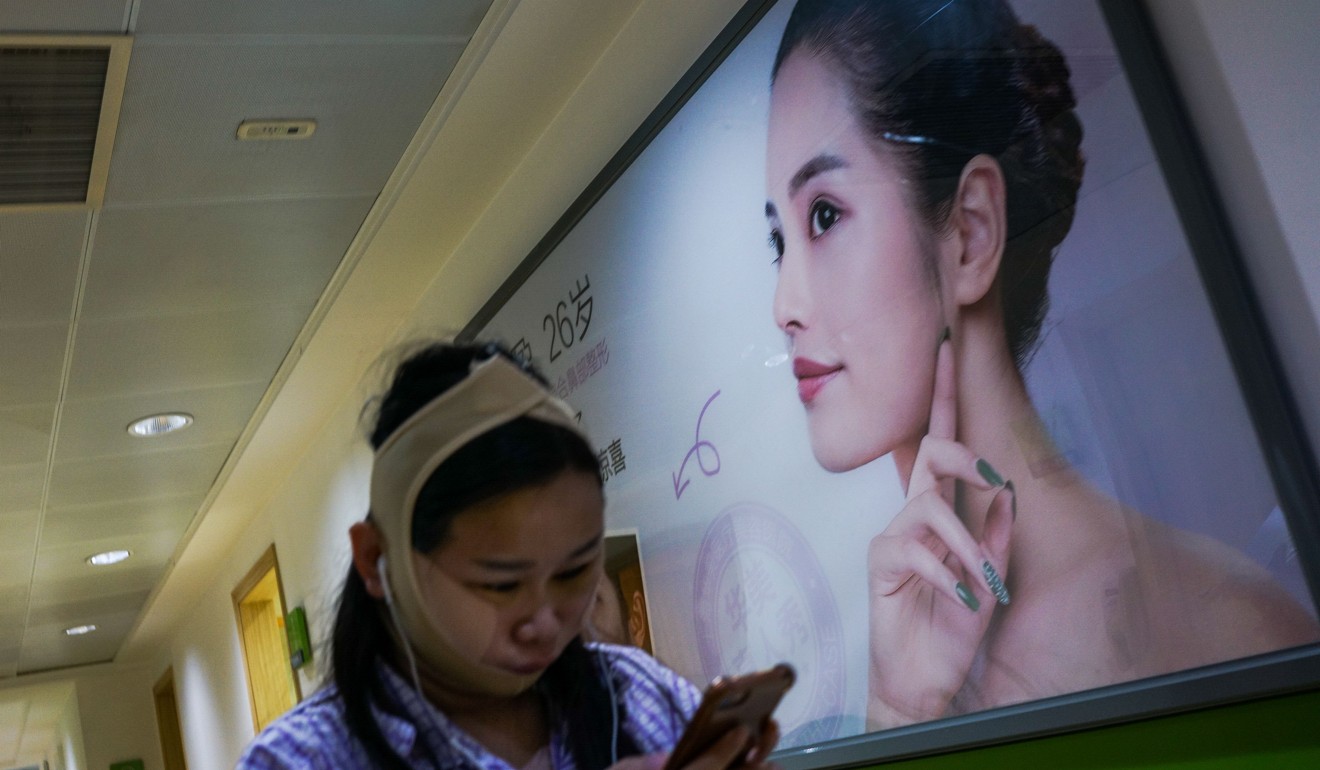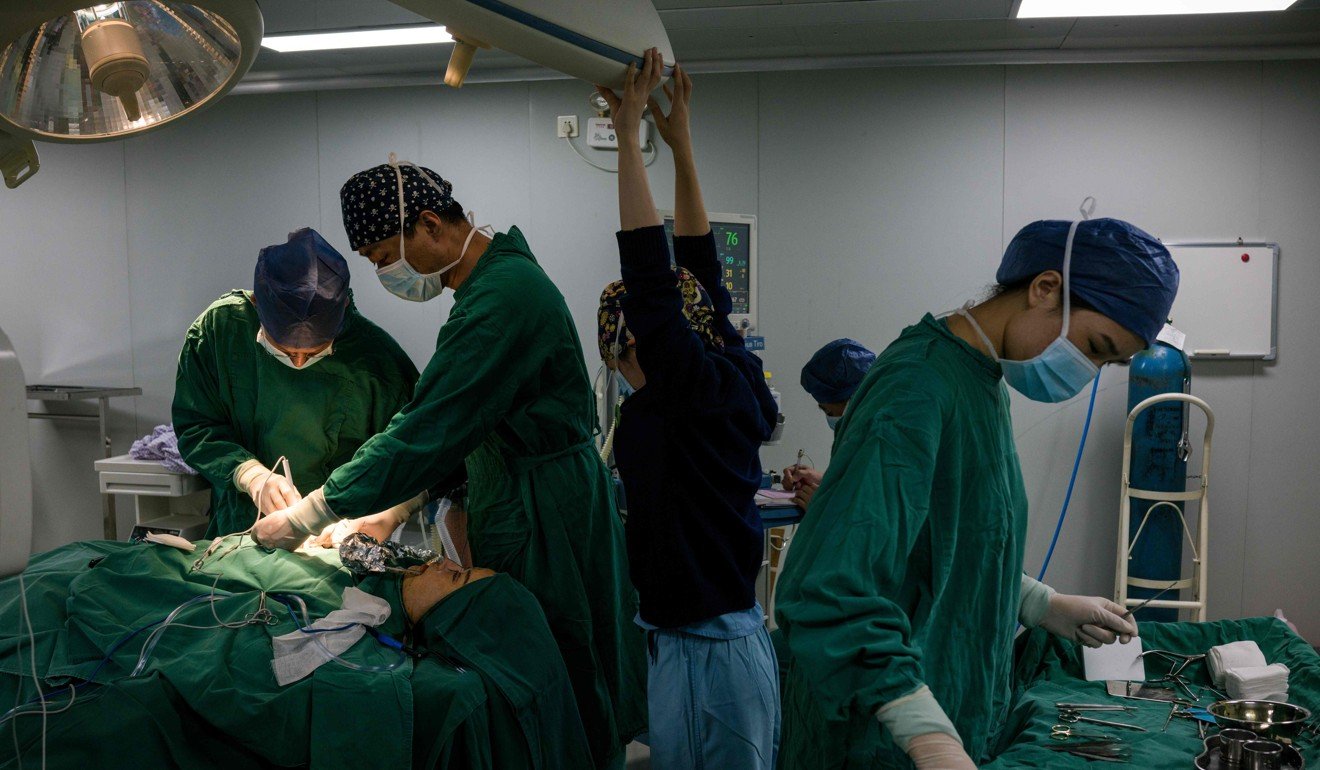The rise of DIY plastic surgery in Asia: from smile trainers to nose slimmers and lifters
As increasing numbers of Chinese go under the knife in their quest for the perfect face, we look at the non-surgical devices on the market, and ask whether they are worth the time, money and pain people spend on them

According to industry app SoYoung, 14 million Chinese are expected to have cosmetic surgery this year, up 42 per cent from last year. The data comes from several sources including global consultancy giant, Deloitte.
In Hong Kong, a nose job costs about US$3,800. But one dubious way to cut costs is to go solo – yes, do-it-yourself. Beyond the Botox-filled syringe option, there’s a range of items reminiscent of torture devices: smile trainers, nose slimmers, scalp stretchers, nose lifters, and face slimmers.

Many devices promise fast results with little or no pain, but for the most part they are selling false hope, she says.
You are purposely making yourself uncomfortable every day for a never-ending period, in the hope of lasting results. If you are lucky enough to see any short-term signs of change, they will fade when you stop using the devices, she says.
Her advice to anyone thinking of buying one is to look into the reviews and real results. But ultimately, as cosmetic enhancement procedures, they offer no solution. In fact, they are a waste of money, she says, adding that if a product sounds too good to be true, it probably is.
“Save the money you’d use on these devices and put them into a savings account. In a few years, you’ll be closer to affording the actual surgery.”
The trend may be a sign of growing desperation to be beautiful. Many DIY devices seem designed to promote an idealised Western appearance. In line, reports which have surfaced in recent
years suggest an increasing number of Asians aim to look more Western.

South Korea has the highest rate of cosmetic procedures per head in the world. More than 4,000 clinics nip and tuck about 650,000 people per year, as well as a rising number of foreign visitors, including Chinese and Japanese citizens, according to news.com.au.
Plastic surgery also lures plenty of men now. Mind you, the dominant look is feminine. South Korean men are having plastic surgery to get the pretty boy looks of their K-pop and K-drama idols.

the emergence of do-it-yourself culture. In step, a host of one-minute do-it-yourself plastic surgery clips has surfaced on video sharing sites.
That said, some coverage is satirical. Video sensation MissRemiAshten states that her take on the DIY craze is in good fun. Mocking buttock implant procedures, she says: “Oh yes, here’s me with the booty
pants. Now we’re going to insert the chicken cutlets. I don’t know which one is which cheek.
“Oh, I just look like I’m taking a wedgie on camera – that just looks unnatural. You can also get the same effect that actually lasts forever by just doing squats at the gym.”
Plastic surgery analyst sceptical Scalpel (skepticalscalpel.blogspot.com) says he bets most DIY plastic surgery devices are useless.
Worse, some may even cause injuries, the self-declared former chairman of surgery says. The risks he cites include wasting money, possible injury, embarrassment, disappointment, even ridicule.
He stresses that he sees no benefits in DIY plastic surgery. A possible exception, he says, is the psychological placebo feeling of doing something about one’s appearance. But that, it seems, is
insufficient grounds. “I would advise people not to consider this,” he says.